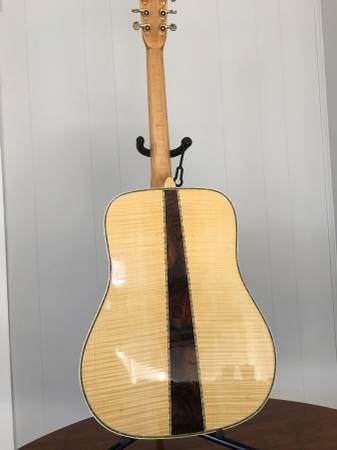


By the end of the century, a “standard” guitar was around 12″ wide and auditorium guitars could reach 14″ wide. As the guitar became more popular, its girth gradually expanded. Introduced in 1937-’38, the Super Jumbo was the culmination of what might be called guitar “size wars.” In the mid 19th century, when American guitar making began, guitars were typically about 10″ wide at the lower bout. One of the former can be seen in this circa 1975 Penco Model A-15-JD.īasically, this Penco is a “copy” of a Gibson J-200 or Super Jumbo, a giant of a guitar burned into our minds with twin pickguards in the hands of the Everly Brothers or dwarfing the golden-throated Emmy Lou Harris. Many were quite whimsical and some very innovative. In fact, it was a lawsuit filed by Norlin (Gibson) against Elger (Ibanez) over trademark infringement (headstock copying) in Philadelphia in the summer of 1977 that gave us the now-ubiquitous term “lawsuit guitar.” But when you look a little closer, Japanese guitars from this period were about way more than copying. Indeed, it was with these “copies” that many Japanese manufacturers honed their chops and became world-class guitar makers. I'd be happy to try to help.The 1970s is often called “the Copy Era” for the dominating presence and spectacular success of Japanese “copies” of popular American guitars, most notably of the Gibson Les Paul. I contacted other sellers and reached out on this site for help and had a number of replies and suggestions so I need to THANK everyone for their input! If anyone is ever faced with a similar situation please contact me. The plastic saddle is 1/8" thick but the height and length, again are unique. The channel dimensions are apparently unique to Panco as I couldn't find anything else like it. This style of screw is designed for the use of an allen wrench. The screws will "bottom out" and raise the metal channel (and plastic saddle) for the height adjustment.

I found some stainless steel screws of the right diameter and thread "count" that have "socket cap heads" I have purchase two lengths 3/8" and 1/2" to determine which length works the best for the height adjustment I need. I was able to find some screws that were the correct diameter (but too long) and by screwing them into the threaded holes in either end of that "channel" I was able to raise the channel and remove it.

OK, The metal channel portion of the saddle is not "fixed".


 0 kommentar(er)
0 kommentar(er)
